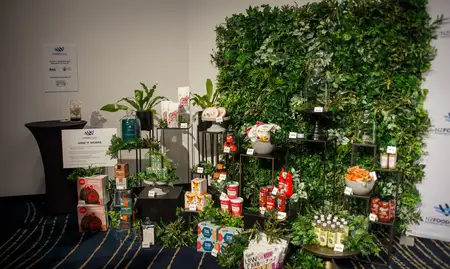
Following the implementation of the Ministry of Health’s Food and Drink Guidance for Schools in 2020, the study aimed to assess whether primary school canteen food menus were adhering to the guidelines. The research was conducted by Senior Dietitian and PhD candidate Danika Pillay and Education Sector Dietitian Marsha Piddington, along with Professor Ajmol Ali and Professor Carol Wham of Te Kunenga ki Pūrehuroa Massey University’s School of Sport, Exercise and Nutrition.
A sample of 133 primary school canteen menus were collected in 2020 from schools of varying deciles, areas and sizes across the country. Questionnaires were also used to gather information from the schools around the food options available to children via the school canteen, tuck shop or through external providers between July 2020 and February 2021.
The researchers developed a menu analysis toolkit to assess the nutritional information of the food available in accordance with the guidelines, which classify food items into three categories – green, amber and red.
The resulting data showed the majority of school canteens were not meeting the guidelines for healthy food and drink provision as outlined by the MoH, with most menu items categorised as the less healthy amber at 41 per cent and unhealthy red at 40 per cent.
Professor Wham says the results are disappointing given schools play a crucial role in helping children make healthy food choices.
“The school environment is an integral place for influencing children’s dietary behaviours, so what we are seeing in these results is most school canteen food providers are not offering choices that promote healthy eating and nutrition. While this isn’t a new finding, as the last two to three decades of research have indicated, schools are not adhering to government guidelines. The research shows despite the responsibility being with the schools’ board of trustees to ensure healthy food and drink are provided, many other priorities are taking precedent, leaving nutrition to fall by the wayside.”
Factors such as school size and deciles were found to contribute to data trends, with lower decile and smaller schools being found to have a lower percentage of green food items (8.6 per cent) to a higher percentage of red food items (48.3 per cent).
Significant regional differences were also observed, with Auckland and Wellington schools offering the highest percentage of green food items (20.4 per cent and 20.2 per cent) compared to Northland (11 per cent), Bay of Plenty (10.4 per cent) and Canterbury schools (12.5 per cent). Wellington schools were found to have the lowest percentage of red food items (25.8 per cent) compared to Auckland (44.8 per cent), Bay of Plenty (41.2 per cent) and Canterbury schools (46.9 per cent).
Ms Pillay says there are several reasons to explain the low percentage of healthy ‘green’ food items in low decile schools and areas of high deprivation.
“It’s an interesting finding which, while not surprising, is concerning. Greater access to external food retailers and a higher density of junk food advertising is apparent in socioeconomically deprived areas, which can be a barrier for schools trying to provide healthier food options as they are now competing with external retailers and learned food behaviours of children. Addressing these barriers is an essential part of reducing inequities in schools in socioeconomically deprived areas.”
The menu analysis showed the most common food items offered were sandwiches, filled rolls and wraps (86 per cent), followed by baked foods and foods with pastry such as pies and sausage rolls (71 per cent) and mixed meals containing ultra-processed food items (66 per cent). Sugar-sweetened beverages were just as prevalent as water on school food menus (54 per cent each), while foods categorised as green (such as sushi and fruit and vegetables) were offered by less than half the schools (45 per cent and 41 per cent respectively).
To address the issue of non-compliance in schools, Professor Wham says there needs to be well-defined targets put into practice, alongside robust monitoring and support systems.
“There is good data from Australia which highlights how feedback and monitoring models from external organisations can be a good way of helping schools adhere to healthy food guidelines. Having measurable and clear targets is also important, as well as clear definitions of healthy versus unhealthy foods. Making the guidelines easy to understand and use is integral because ultimately, it is the school canteen managers and school leaders, not dietitians and nutritionists, who will need to utilise and implement this document.”
Ms Pillay says the motivation behind this research paper is for it to be a call to action to the government.
“They have created the new Healthy Food and Drink Guidelines for Schools, but how are they going to address the barriers that schools are facing to implement it? We need to see a solid plan that will improve the school food environment for our tamariki and reduce inequities in our communities.”
Research paper: Pillay, D., Piddington, M., Ali, A., & Wham, C.A. (2023). Food menus within New Zealand primary school canteens: Do they meet the guidance? Health Promotion Journal of Australia. DOI: 10.1002/hpja.793
Related news
Activating aid at the New Zealand Food Awards
Guests of the New Zealand Food Awards gala dinner were encouraged to help fundraise for New Zealand's largest food rescue organisation.

Serving up nutritional education to help communities in need
Student dietitians are working closely with schools in South Auckland to teach young adults about nutrition, cooking and healthy eating.

The silent expense of keeping the whānau fed
A new publication details the strategies and struggles of 20 Māori mothers to keep their families fed in food insecure environments.
